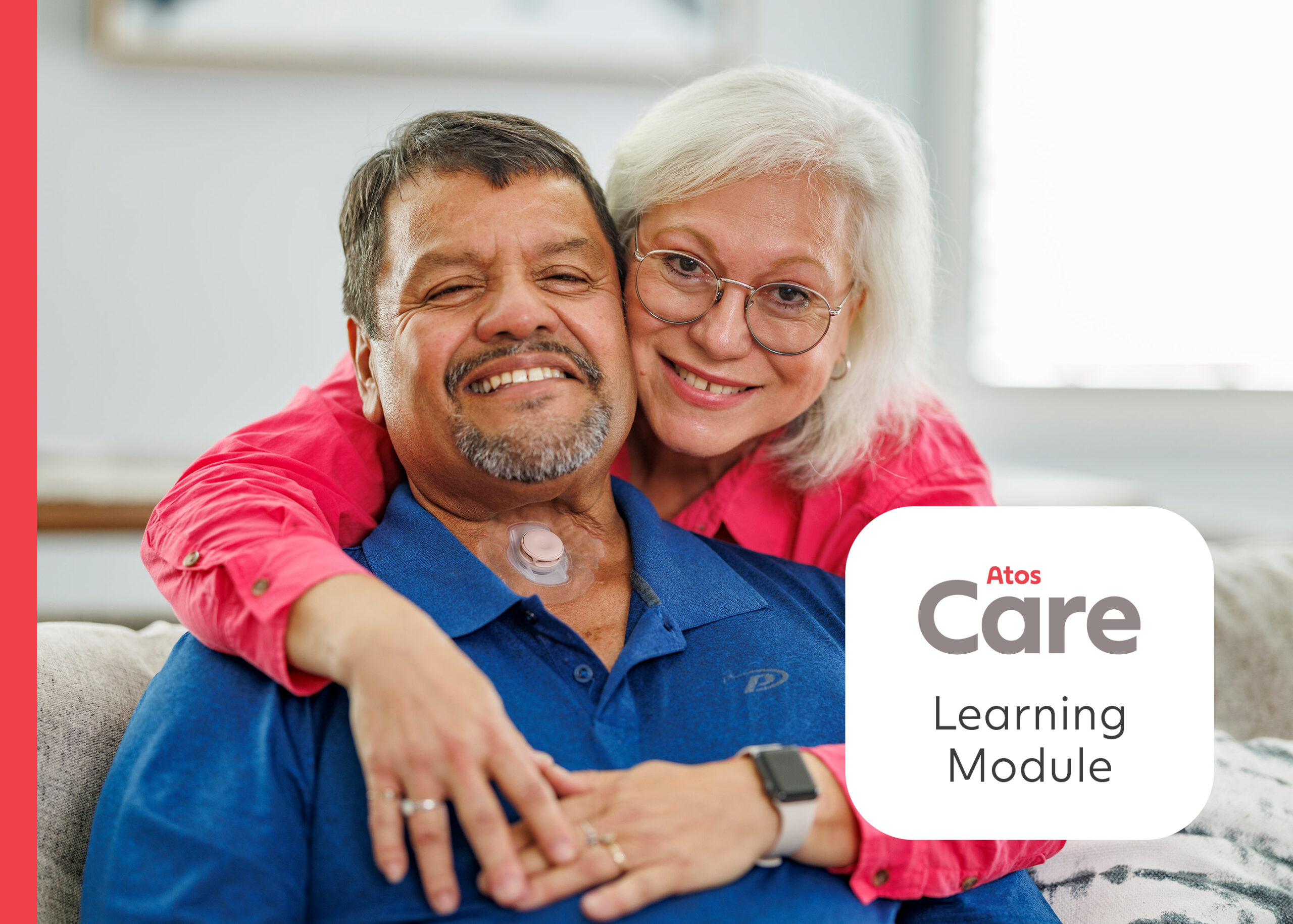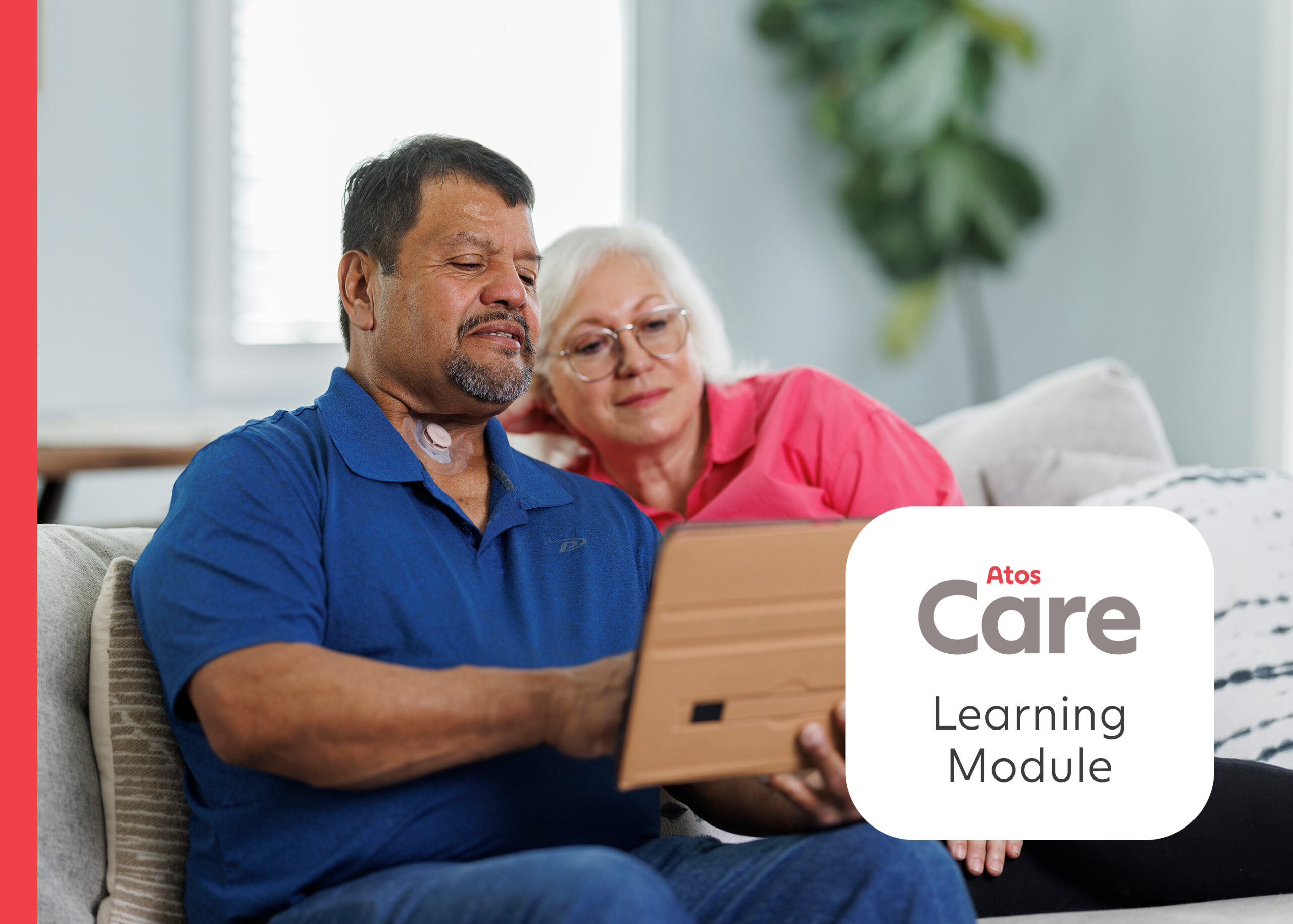Online Learning: Respiratory Health and Alternative Communication
Join our Atos Care online learning to gain insights into respiratory health and alternative communication methods post-laryngectomy. Led by an expert speech language therapist, this session covers topics such as understanding the following:
- Changes in the respiratory system
- The role of Heat and Moisture Exchangers (HMEs)
- Various communication options for patients

Course length: 10 minutes
Register now to enhance your knowledge and support your loved one’s recovery journey.
Register now to join
Please submit the form below to access the learning module. You will receive an email with direct access to the course.
*required fields
This site is protected by reCAPTCHA and the Google Privacy Policy and Terms of Service apply.
Comprehensive Care After Laryngectomy: Key Learnings from This Webinar
Chapter 1: What Happens to the Respiratory System After a Laryngectomy?
In this online module, you will learn about how a total laryngectomy affects the respiratory system. This chapter delves into physiological changes that occur when the upper airways, especially the nose, are no longer involved in the breathing process. You will also learn about the new role of the tracheostoma.
Chapter 2: How Can Heat and Moisture Exchangers (HMEs) Improve Pulmonary Health?
Pulmonary health can be significantly impacted following a laryngectomy, but the use of Heat and Moisture Exchangers (HMEs) can mitigate these effects. This chapter explains how HMEs work and what that entails in terms of filtering, humidifying, and warming the air.
Chapter 3: Why Is Establishing a Day & Night HME Routine Essential?
In this module, you will learn that consistency is key when it comes to using HMEs for respiratory health. In this chapter, we explore an optimal day and night regimen utilizing different types of HMEs.
Chapter 4: What Are the Communication Alternatives After a Laryngectomy?
Losing the ability to speak naturally can be a challenge after a total laryngectomy, but several communication alternatives are available. This chapter covers various options, including esophageal speech, the electrolarynx, the voice prosthesis, and hands-free communication.
Chapter 5: How Can Caregivers Support Voice Rehabilitation?
In this module, you will learn about the role of voice rehabilitation in recovery for individuals who have undergone a laryngectomy. This chapter focuses on how caregivers can play a supportive role in the rehabilitation process. The chapter also highlights the importance of ongoing communication with clinicians.
Chapter 6: What Should Caregivers Do If They Face Challenges?
In this final chapter, we address how caregiving can be demanding when it involves complex medical needs such as those following a laryngectomy. You will learn about the importance of seeking help when faced with challenges. Caregivers are encouraged to maintain open communication with healthcare providers, utilize resources like the Atos Care program, and connect with support networks for advice and reassurance.
Share
Save to my content

